
It is no secret that the LPVO is taking over the optics world. After having used one myself for the last couple of years, I see what the hype is really about. It fills so many different roles well and adds an extra capability to just about any platform.
The Low-Powered Variable Optic(LPVO) is a variable-powered optic that has a wide zoom capability starting at 1x and ending somewhere between 6x and 10x. Their versatility is unmatched and allows users to make fast close shots while also having the capability to identify and hit targets out to 500 yards or more.
I’m usually not quick to jump on trends like this. However, the LPVO’s rise in popularity is more than a good marketing scheme, I promise you.
Affiliate Disclosure: This article may contain affiliate links. When you use these links, I earn a small commission from each sale generated at no cost to you. This commission helps me continue to put out free content. I work a full-time job that I am very happy with; therefore, I don’t need this commission and am not obligated to speak highly of any product. Everything written is my own opinion: the good, the bad, and the ugly.
- Where It All Began With the LPVO
- LPVO Application and Use
- Drawbacks and Limitations
- Choosing an LPVO: Considerations
- Hunting with an LPVO-Not Just for Combat
- The Future of the Low-Powered Variable Optic
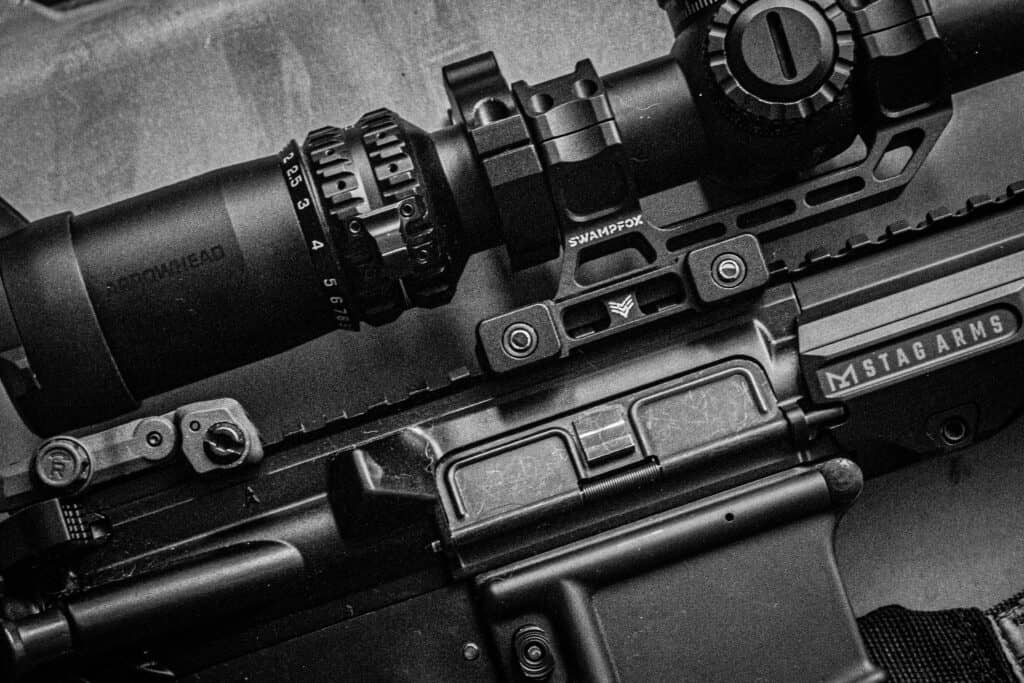
Where It All Began With the LPVO
The modern-day Low-Powered Variable Optic was born out of a need for the Army to see and identify targets at further distances. This demand for a greater ability came around the late 1980s and early 1990s, after the United States’ involvement in places like Panama and Grenada. Special Operations Forces needed extra range when seizing airfields, all while having close-quarters battle(CQB) capability.
At that time, many of these soldiers were equipped with red dots, fixed mid-power, or variable high-power optics that limited them one way or the other. Red dots were perfect for CQB scenarios but limited them to mid and long ranges. The fixed power optics, like the classic ACOG, extended their range but were limited at close range, which is fixed today with the addition of a canted red dot. Lastly, the variable high-power scopes were great for long-range but nearly useless clearing buildings.
Use coupon code KTG10 to get 10% off your order of $150 or more at Brownells.
So in an effort to get the best of those three options, the LPVO entered the scene. The 1x allowed users to have quick shots at close range, while the ability to zoom to 10x gave them capabilities previously reserved for high-power scopes. The civilian market was eager to adopt this style of optic but was limited by optics manufacturers, who had few options at the time.
In recent years, however, the manufacturers identified the need for the LPVO and flooded the markets with options. While it undoubtedly took too long for this to happen, we now have options in every price range imaginable, giving everyone the opportunity to see what these optics are all about.
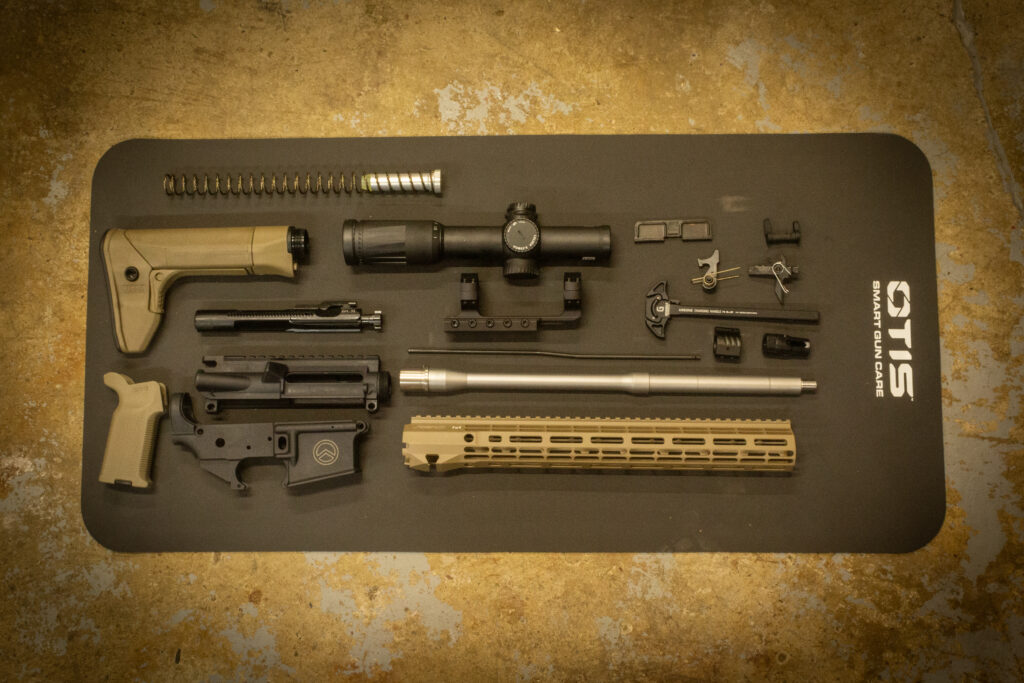
LPVO Application and Use
The LPVO is flexible and gives the shooter the capability to transition from short to mid-range shots quickly. For me, living in a rural area, this is the perfect class optic that will have me covered in just about any scenario imaginable. Again, I can’t emphasize how versatile these optics are.
An OK Red Dot Replacement
When set to 1x, they can be effectively employed like a red dot. This is even more true as almost every LPVO on the market includes an illuminated reticle, further aiding in quick transitions and shots. Also, at 1x, maintaining a clear sight picture while keeping both eyes open is easy. They are not a replacement for a red dot, though. Red dots still very much have their place, and I believe there is nothing quicker and easier to use than a red dot.
Goodbye ACOG
With close ranges covered adequately, the LPVO can be quickly switched to a mid-range power, such as 3x or 4x, and achieve the same capability that the trusty ACOG has. Shots out to 300 yards are possible while also maintaining a wide field of view. You have to consider the focal plane of your optic at this point, as your reticle’s hold-overs may not be accurate with a Second Focal Plane, which I will cover later.
Not for the Sniper
Lastly, when set to the highest magnification level, typically between 6x and 10x, depending on your scope, you have some serious capabilities at mid to long ranges. Having personally used mine to shoot my 5.56 out to 600 yards with consistency, I believe this is where the LPVO really sets itself apart from other types on the market. This capability is not only good for shooting those distances but also for properly identifying targets and ranges.
Having this capability of close quarters to 600 or so yards makes them an extremely popular option on RECCE-style rifles. In fact, the popularity of the RECCE-style rifle may be the main reason that LPVOs have become what they have. They are the perfect match for each other and make a really capable platform.
Drawbacks and Limitations
While there is obviously a lot that the LPVO has going for it, it isn’t all rainbows and unicorns. The optics of this class do have their limitations. After all, you can’t have it all.
Eye Relief
The biggest issue that I have found with the LPVO is eye relief. Obviously, this is going to be largely dependent on your individual optic, but as a general rule, the higher your magnification, the less eye relief and smaller eye box you will have. In simple terms, the eye box is the amount of head movement you can have before losing a clear sight picture. This problem is magnified, no pun intended, when using a higher power ratio, such as a 1-10x. Therefore, a 1-6x will be a lot more forgiving in this aspect.
While I love just about everything about my Swampfox Optics Arrowhead, when at 10x, the eye box is very short, and parallax issues can occur. This hasn’t stopped me from shooting out to distance, but it may take a fraction of a second longer to get a good sight picture. An adjustable stock would be ideal here as you can set it to the right length for prone shots, reducing the fatigue that craning your neck entails.
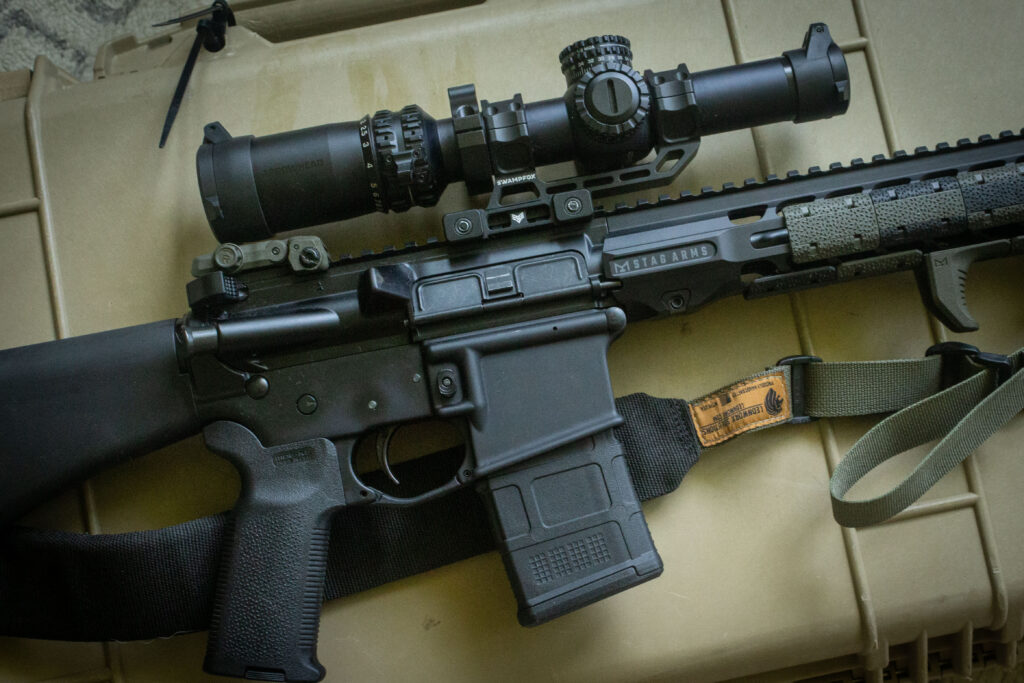
Just a Tad Heavy
Now that I’ve beat eye box/eye relief to death let’s talk about something else that really bothers me about LPVOs. Weight. Since these are most commonly found on AR-15-style rifles, we will move the discussion here. The AR-15 is meant to be lightweight. Adding a heavy pound-and-a-half optic to the top rail, with additional accessories to fit your needs, will weigh it down and make that slim little rifle that much more uncomfortable.
More Batteries
Lastly, most of these use batteries. By now, we are used to some sort of battery management. We are somewhat familiar with battery life and usually have some extra batteries in the grip or stock of our rifles. However, what we can’t control is operating temperatures or how they will perform in extreme cold and heat. So the reliability of the illuminated reticle can be a problem. Luckily, most, if not all LPVOs use etched reticles that will still work just fine if not illuminated.
The limitations of the LPVO may or may not be a deal breaker for you, they weren’t for me. All of those limitations are more than made up for by its versatility. Now that we’ve covered the basics of the LPVO and its uses. Let’s look at some things you should consider when in the market for one.
Choosing an LPVO: Considerations
If you’ve decided that an LPVO is right for your rifle setup, there are a few things that you need to consider when looking at the available options. Magnification, tube diameter, FFP or SFP, illumination capabilities, and mounting options are just a few. You really need to think about the use case for this before diving into it. Ask yourself, what will I be using it for? And how far do I intend to shoot with it?
Now, let’s take a deep dive into each one.

LPVO Magnification
The magnification level that you choose will largely depend on what type of ranges you will want to shoot with it. As a rule of thumb, you will want 2x for every 100 yards. That means that a 1-6x will be ideal for shots out to 300 yards, 1-8x for 400 yards, and 1-10x for 500 yards. Of course, you can shoot farther with any of those but those ranges are the most practical.
We touched on this briefly earlier, but another consideration that affects your choice of magnification level is the eye box. Essentially how forgiving your eye relief is before running into parallax issues. The higher the power ratio, the more restrictive your eye box will be. Therefore, if you plan on only shooting 400 yards occasionally, and your typical shots will be under 200 yards, a 1-6x may be the best option.
Tube Diameter
Tube diameter is another choice that you may come across when narrowing down your LPVO options. Your tube diameter directly affects your objective diameter and therefore gives you a wider field of view at each respective zoom range. While some may argue that the light-gathering qualities are better with the higher tube diameters, I find that the difference is so small that it doesn’t affect my decision.
The tube diameter you choose will limit your mounting options in most cases. The most popular tube diameter for LPVOs at the moment is 30mm, which has plenty of mounting options. A 1-inch tube diameter has nearly the same amount of options, and 34mm options are limited. 34mm LPVOs are becoming more popular, and I expect more mounting options to become available soon.
Your tube diameter can also play a major role in how much adjustment your scope has for elevation and windage. 34mm scopes are popular in long-range shooting for this reason. However, at the various ranges you will be employing your LPVO, it is very unlikely that you will run out of adjustment.
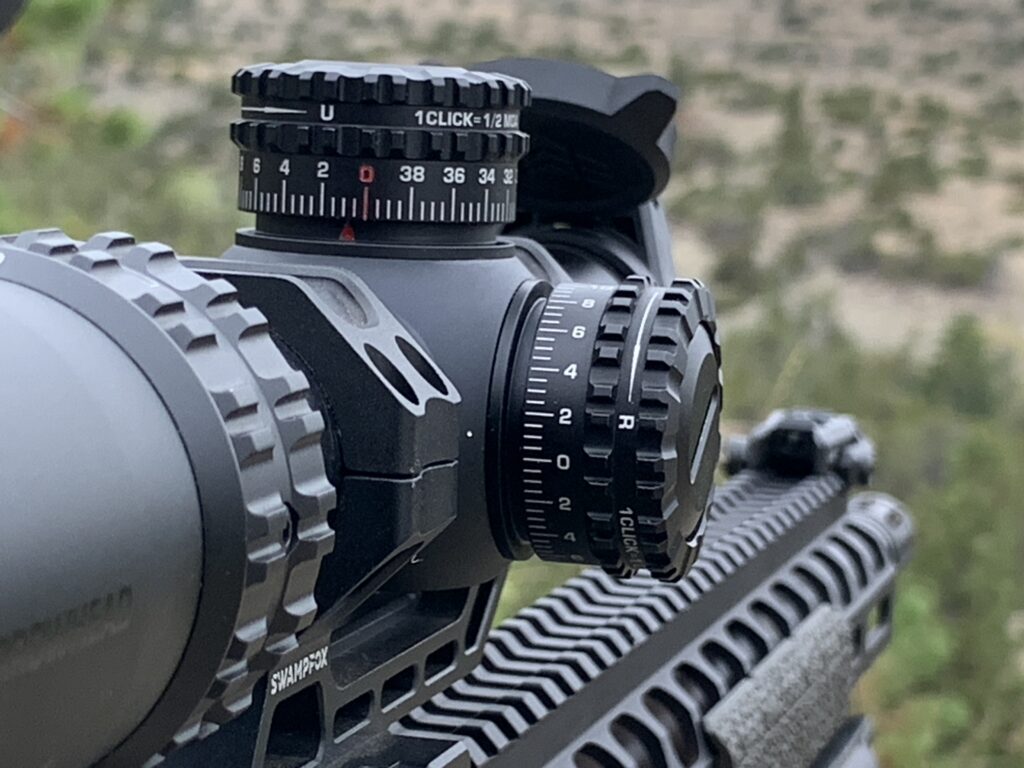
Focal Plane
You are going to have to make a decision on whether the first focal plane(FFP) or second focal plane(SFP) is right for you.
First Focal Plane
FFP means that your reticle will scale with your magnification level. This is advantageous for longer shots as your reticle’s drop compensations or holdover measurements will be accurate at every level of zoom. The downsides are that they are generally more expensive to produce, thus, more expensive to buy. Also, as the reticle scales, your sight picture changes which can add to some confusion if you are not familiar with it.
Second Focal Plane
SFP optics have a reticle that stays the same size throughout its range of zoom. Your reticle holdovers and drop compensations are only accurate when set at the highest level of magnification. Although, your turret adjustments are still 100% accurate with SFP optics. They are a little more affordable and provide you with a consistent sight picture no matter what.
There is no “Best.” Which one is better depends on the use. I find that when I need my reticles compensations to be accurate, at mid- to long ranges, I’m typically at the highest magnification level already. I also tend to like the consistent sight picture. If shooting under 300 yards, the 5.56 is flat enough that those drop compensations are typically not that necessary. A SFP works best for me on my AR-15. Those of you that will be using your reticle to range and size targets will prefer the FFP. This requires a lot of familiarity with the reticle to do right but is extremely effective when used properly.
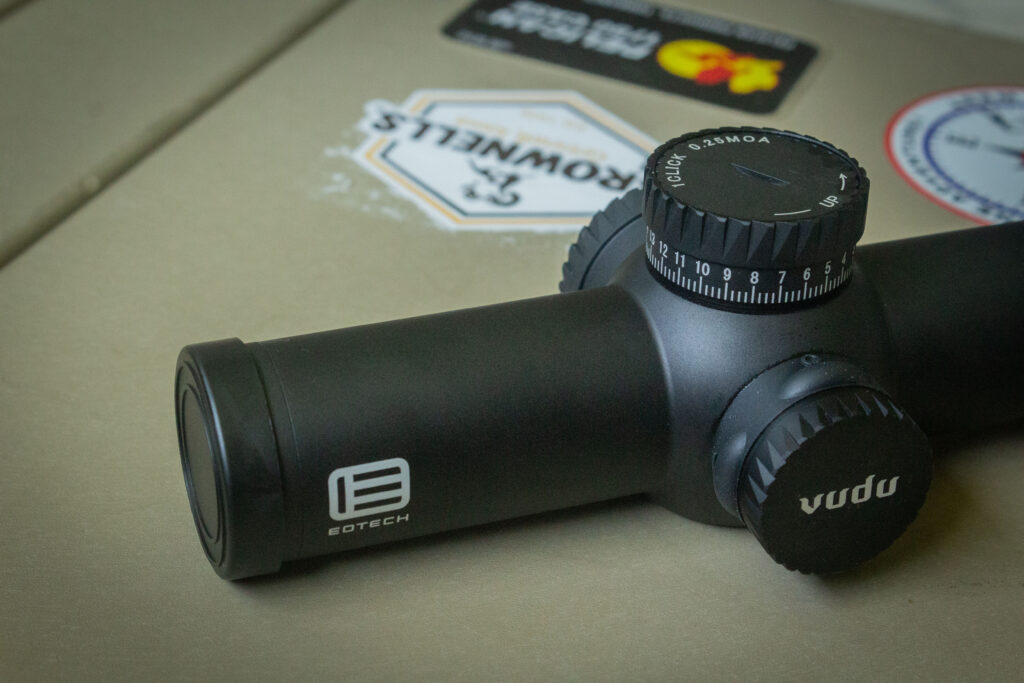
Reticle Illumination
Reticle illumination is another thing to consider when choosing an LPVO. Do you need it to be night vision capable? What is your primary use case? Will it be in arctic environments where a snow-covered backdrop requires a very bright reticle to be effective? These are all questions worth asking. Everyone’s scenario will be different, and not all optics will work right for everyone.
LPVO Mounting Options
Lastly, you need to consider mounting options. This will be dictated by your tube diameter and is as important as choosing the optic itself. You will typically see a cantilever-style mount on rifles equipped with LPVOs. This is because the design of the scope lending itself to some limited tube real estate for scope mounts to get the proper eye relief. On AR platforms, a cantilever mount will keep your scope mounted on the receiver portion of your top rail, freeing up any issues you may encounter having it mounted on the forearm.

Hunting with an LPVO-Not Just for Combat
Believe it or not, the LPVO was used in the hunting industry long before the military adopted it. Especially popular in Europe for driven-style hunts that require fast shooting, the large magnification range will cover you in all scenarios. This may be the perfect scope for deer drives through clear cuts, as fast shots are constantly presenting themselves in these hunts.
Although the hunting industry has trended away from the LPVO for a while now, it seems to be making a comeback due to its popularity in the tactical space. Companies like SIG SAUER show many advertisements of their Cross hunting rifle equipped with an LPVO. Which I agree might be the ultimate combination for those compact-style bolt action rifles. Personally, I think that this style of rifle is the next generation of Jeff Cooper’s “Scout Rifle.”
It isn’t limited to big game hunting. I use my LPVO-equipped AR-15 for coyote and predator hunting and have found it to work great under those conditions. It kills two birds with one stone, I get to hunt with it while also gaining valuable trigger time and familiarity with it.
The Future of the Low-Powered Variable Optic
In many ways, the LPVO can be considered the new fad of today. While I may agree with that in some ways, I think this fad is here to stay. It is too practical and useful to go away any time soon, and until technology evolves, it is the best option we have for that range of versatility.
This can easily be proved by the fact that the Marine Corps adopted an LPVO back in 2021. They also saw the advantages that this class of optics has for their needs. As with most things adopted in any number by the various military branches, it will continue to drive civilian sales.
In short, the Low-Powered Variable Optic isn’t going anywhere, it is here to stay.
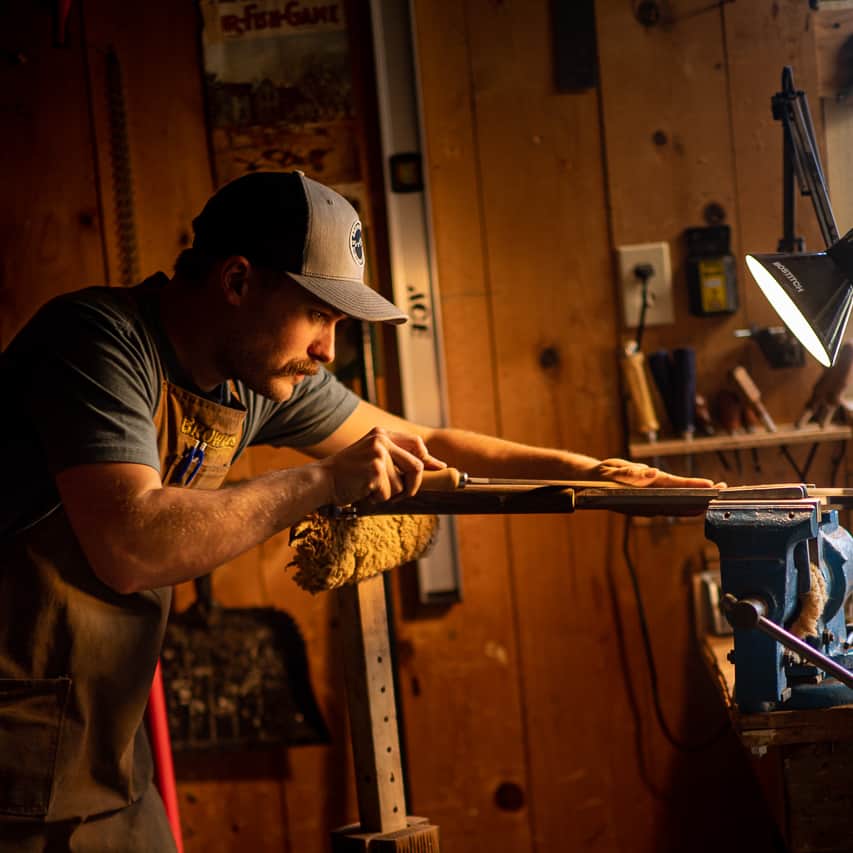
Written by: Kurt Martonik
Kurt is a Gunsmith, Reloader, Hunter, and Outdoorsman. He grew up in Elk County, Pennsylvania, where he became obsessed with the world of firearms. Following high school, Kurt enlisted in the United States Air Force as a Boom Operator, where he eventually rose to the position of Instructor. After his military service, he attended the Colorado School of Trades(CST) in Lakewood, CO for gunsmithing. Following graduation, he accepted a job at C. Sharps Arms in Montana, where he worked as a full time stockmaker and gunsmith.
Great write up. Another pro for LVPO vs red dot is for people like me with astigmatism. I tried the red dot + magnifier set up and the dot would starburst to cover the entire target at distances further than 50 yards.
Great response! Thank you for adding this, that is definitely something to consider. Have you had the same astigmatism issues with green dots? I’ve heard that that solves it but I haven’t talked to anyone who’s tried it.
Hi Kurt, just read your article and it was a great intro. I can help with the red vs green dot for astigmatism. I think it depends on the person, but a green dot is actually worse for mine. The green appears brighter and in low light, brighter=less sharp. I see the same difference reading diesel and unleaded gas prices at night, the red unleaded is always sharper to me. Prism sights and illuminated LPVOs are great for me in either color, but for a dot, red is always sharper